Dofetilide Safety Checker
Check Your Medication Safety
This tool helps you determine if your medications are safe to take together when you're on dofetilide (Tikosyn). The interaction between dofetilide and cimetidine can cause life-threatening heart rhythm problems.
Two medications - one for heart rhythm, the other for heartburn - might seem harmless together. But when dofetilide and cimetidine are taken at the same time, the result can be fatal. This isn’t a theoretical risk. It’s a well-documented, life-threatening interaction that has sent patients to the ICU, triggered emergency defibrillations, and led to dozens of reported deaths over the past two decades.
What Dofetilide Does - and Why It’s So Sensitive
Dofetilide, sold under the brand name Tikosyn, is a Class III antiarrhythmic drug used to restore and maintain normal heart rhythm in people with atrial fibrillation or atrial flutter. It works by blocking specific potassium channels in the heart, which helps reset abnormal electrical signals. But that same mechanism makes it extremely sensitive to small changes in blood levels.
Dofetilide has a narrow therapeutic index. That means the difference between a therapeutic dose and a toxic one is razor-thin. Even a 20% increase in blood concentration can push a patient over the edge into dangerous territory. The FDA-approved prescribing information warns that 3-5% of patients on dofetilide alone develop significant QT prolongation - a delay in the heart’s electrical recovery phase that can spiral into torsades de pointes, a type of chaotic, often fatal ventricular arrhythmia.
That’s why dosing is strictly tied to kidney function. Patients with creatinine clearance below 20 mL/min are not allowed to take it. Blood levels are monitored. Electrolytes like potassium and magnesium are checked. And yet, despite all these safeguards, one common over-the-counter drug can undo everything.
How Cimetidine Turns a Safe Drug Into a Deadly One
Cimetidine, sold as Tagamet, is an H2 blocker used to reduce stomach acid. It was once one of the most popular medications for ulcers and GERD. But unlike newer alternatives like famotidine (Pepcid) or proton pump inhibitors (omeprazole), cimetidine has a hidden, dangerous side effect: it blocks the kidney’s ability to clear dofetilide.
Approximately 80% of dofetilide is eliminated unchanged through the kidneys via a specific cation transport system. Cimetidine is a powerful inhibitor of that system. It doesn’t just slow things down - it nearly shuts it off. Studies show that when cimetidine is taken with dofetilide, plasma levels of dofetilide rise by 50-100% within 24 hours.
That spike directly correlates with QT interval prolongation. In clinical trials, the rate of dangerous QT prolongation jumped from 3-5% with dofetilide alone to 12-18% when cimetidine was added. The risk of torsades de pointes increased by more than fourfold. According to the American Heart Association’s registry data, the relative risk is 4.2:1 - one of the strongest drug interaction signals ever recorded in cardiology.
Why Famotidine Is Safe - and Cimetidine Isn’t
This isn’t a problem with all acid-reducing drugs. Famotidine (Pepcid) and ranitidine (Zantac, now withdrawn) do not interfere with renal cation transport. Studies DOF-30001 and DOF-30002, conducted during dofetilide’s FDA approval, showed that famotidine had no effect on dofetilide levels, even at high doses.
That makes the difference crystal clear: if you’re on dofetilide and need heartburn relief, famotidine is your go-to. So is omeprazole, esomeprazole, or any proton pump inhibitor. These drugs work differently - they target stomach acid production directly, not kidney transport systems. They’re safe. Cimetidine is not.
And yet, people still take it. Why? Because it’s cheap. Because it’s still sold over the counter in some countries. Because patients don’t realize their “simple” antacid could be a ticking time bomb. A 2020 case report in the Journal of Cardiovascular Electrophysiology described a 72-year-old man who developed torsades de pointes just 72 hours after starting cimetidine for heartburn. He was on stable dofetilide. He didn’t know the risk. He didn’t tell his doctor. He nearly died.
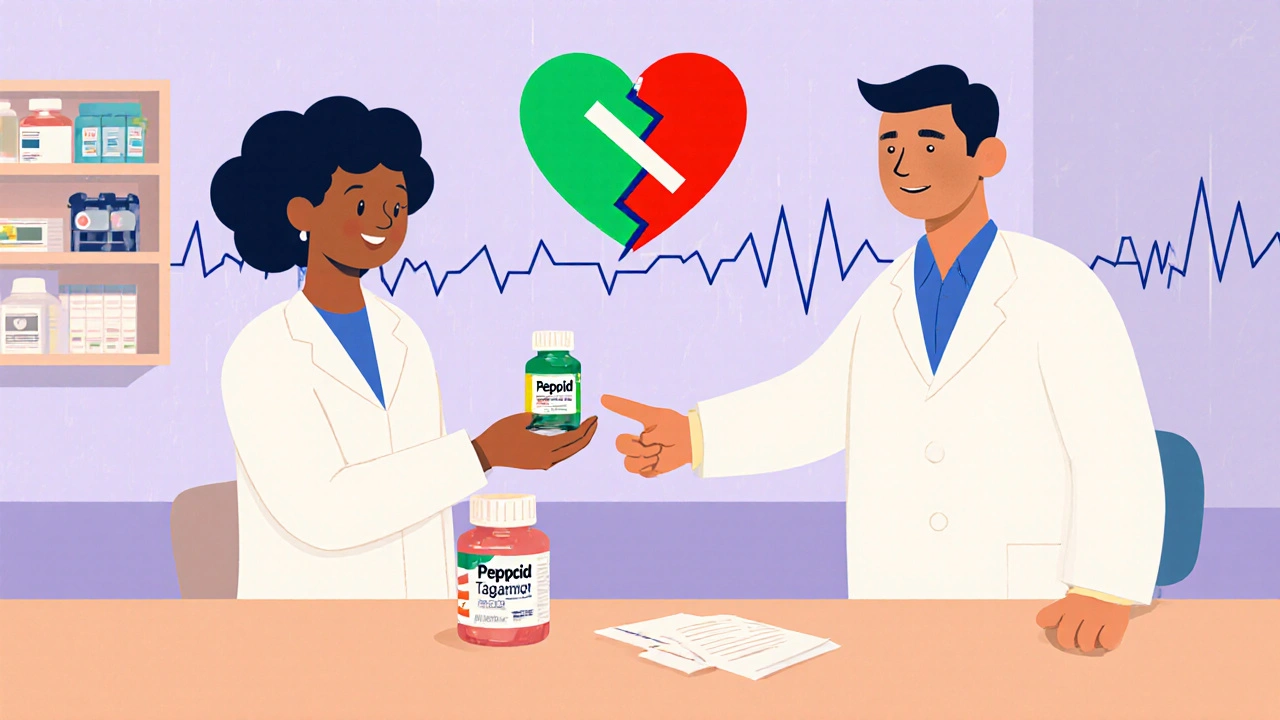
Real Cases, Real Consequences
The FDA’s Adverse Event Reporting System (FAERS) has logged 87 cases of QT prolongation and 23 cases of torsades de pointes directly linked to this combination between 2010 and 2022. That’s just the tip of the iceberg - many cases go unreported.
One 65-year-old woman in a Mayo Clinic case report took a single 300 mg dose of cimetidine for sudden heartburn. She’d been on dofetilide for months. Within hours, she collapsed. Her ECG showed polymorphic ventricular tachycardia. She survived, but only after emergency cardioversion and ICU care.
Surveys of 47 academic medical centers found that 12-15% of unexpected torsades cases in dofetilide patients involved unrecognized cimetidine use. In hospitals, this interaction is now considered a systems failure - not a patient mistake. If a doctor prescribes dofetilide and a pharmacist fills a cimetidine script, something broke down.
How Clinicians Prevent This Interaction Today
Thankfully, modern systems are catching this before it happens.
- Before starting dofetilide, doctors must check for any current or recent cimetidine use - even if it was taken weeks ago.
- Baseline QTc must be under 440 ms (or 500 ms if there’s ventricular conduction delay). If it’s higher, dofetilide is contraindicated.
- Electronic health records (EHRs) like Epic and Cerner now have mandatory alerts. If a provider tries to prescribe cimetidine to a patient on dofetilide, the system blocks it and requires a cardiologist override.
- AI tools are now predicting these interactions 72 hours in advance, using medication history, lab values, and patient demographics to flag at-risk patients before they even fill the prescription.
According to a 2023 study in the Journal of the American Medical Informatics Association, the rate of inappropriate co-prescribing dropped from 8.7% in 2015 to just 1.2% in 2022 - thanks to these digital safeguards.
But the human element still matters. Patients must be told - clearly and repeatedly - that cimetidine is off-limits. A simple handout, a verbal warning, a note in the patient portal: all of it helps.
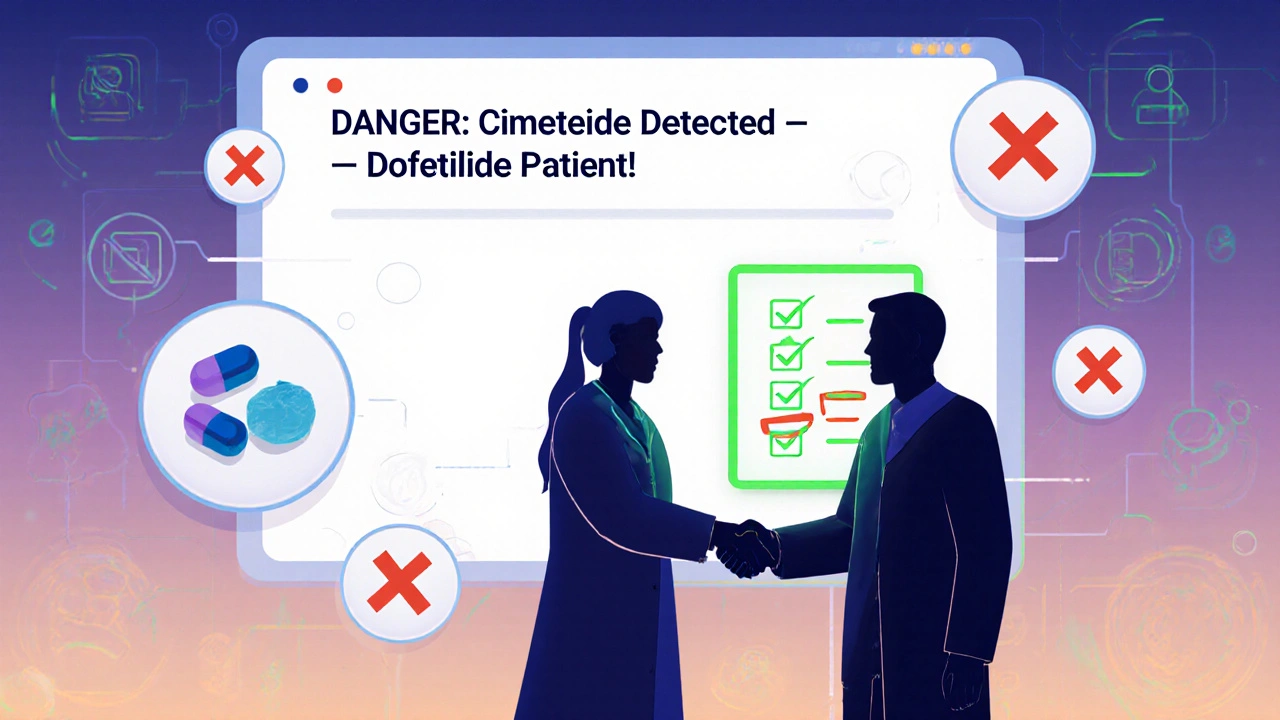
What to Do If You’re on Dofetilide
If you’re taking dofetilide:
- Never take cimetidine (Tagamet) - even once. Even for a single heartburn episode.
- Check every medication label - including OTC products. Some combination cold or GI remedies still contain cimetidine.
- Use famotidine (Pepcid AC), ranitidine (if still available), or a PPI like omeprazole instead.
- Keep your potassium levels between 4.0 and 5.0 mmol/L. Low potassium makes QT prolongation worse.
- Inform every new doctor, pharmacist, or ER provider that you’re on dofetilide. Say it clearly: “I’m on Tikosyn - no Tagamet.”
If you’ve taken cimetidine recently - even a few days ago - and you’re on dofetilide, contact your cardiologist immediately. Don’t wait for symptoms. QT prolongation can be silent until it’s too late.
The Bigger Picture: Polypharmacy and Aging Hearts
This isn’t just about two drugs. It’s about how complex modern medicine has become. The average American with atrial fibrillation takes nearly seven prescription medications. Add supplements, OTC drugs, and antibiotics - and the risk of dangerous interactions multiplies.
Cimetidine use has dropped sharply since its peak in the 1990s - from 28 million annual prescriptions to just 1.2 million in 2022. But it hasn’t disappeared. It lingers in nursing homes, veterans’ clinics, and among older adults who remember it as the “old heartburn pill.”
The American Geriatrics Society’s 2023 Beers Criteria lists the dofetilide-cimetidine combo as one of the most inappropriate medication pairs for older adults. That’s not an accident. It’s a warning. And it’s one we can’t afford to ignore.
Bottom Line: This Interaction Is Not a Guess - It’s a Rule
There is no safe dose of cimetidine for someone on dofetilide. No “just this once.” No “I took it last week, it’s fine.” The data is too clear. The consequences are too severe.
This interaction is taught in medical school. It’s flagged in every major drug database. It’s embedded in hospital protocols. And yet, it still happens.
If you’re on dofetilide, treat cimetidine like a live wire. Avoid it completely. Switch to a safe alternative. And never assume your pharmacist or doctor knows you’re taking it - tell them yourself.
Because when it comes to dofetilide and cimetidine, there’s no middle ground. There’s only safety - or survival.
Can I take famotidine (Pepcid) instead of cimetidine while on dofetilide?
Yes, famotidine is safe to use with dofetilide. Unlike cimetidine, famotidine does not block the kidney’s cation transport system, so it doesn’t raise dofetilide levels. It’s the preferred H2 blocker for patients on Tikosyn. Doses up to 40 mg twice daily are considered safe. Proton pump inhibitors like omeprazole are also safe alternatives.
How long does cimetidine stay in my system after I stop taking it?
Cimetidine’s effects on dofetilide clearance can last for several days. The half-life of cimetidine is about 2-3 hours, but its inhibition of renal transport persists longer. Experts recommend waiting at least 5 half-lives of dofetilide (about 10 days) after stopping cimetidine before restarting dofetilide. During this time, QT intervals should be monitored, and electrolytes checked.
Can I take cimetidine if I’m not currently on dofetilide but might start it soon?
No. If you’re planning to start dofetilide, you must stop cimetidine at least 5-7 days before your first dose. Your doctor will check your baseline QTc and kidney function. Taking cimetidine even a few days before starting dofetilide can still elevate your risk. Always disclose all medications - including OTC - before beginning dofetilide therapy.
What are the signs that I might be experiencing torsades de pointes?
Symptoms include sudden dizziness, lightheadedness, palpitations, fainting, or seizure-like activity. Some people feel a rapid, pounding heartbeat before collapsing. These episodes can be brief but are life-threatening. If you experience any of these while on dofetilide - especially after starting a new medication - seek emergency care immediately. Do not wait.
Is this interaction only dangerous for older adults?
No. While older adults are at higher risk due to slower kidney function and polypharmacy, this interaction affects anyone on dofetilide, regardless of age. Case reports include patients in their 40s and 50s. The risk is based on pharmacokinetics - not age. If you’re on dofetilide, you’re at risk, period.
Are there any other drugs I should avoid with dofetilide?
Yes. Besides cimetidine, avoid verapamil, trimethoprim (in Bactrim), ketoconazole, and other strong inhibitors of renal cation transport. Many antibiotics, antifungals, and heart medications can also prolong QT. Always check with your cardiologist before starting any new drug - even something as simple as an antacid or pain reliever.

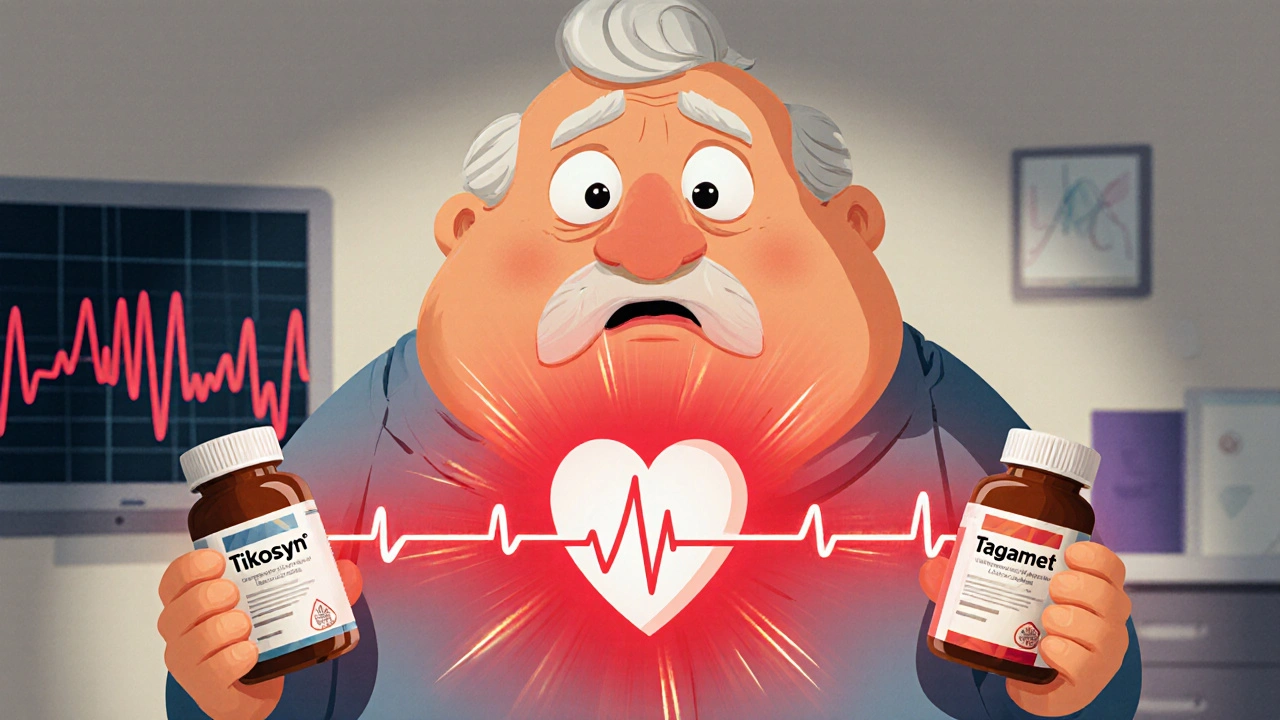
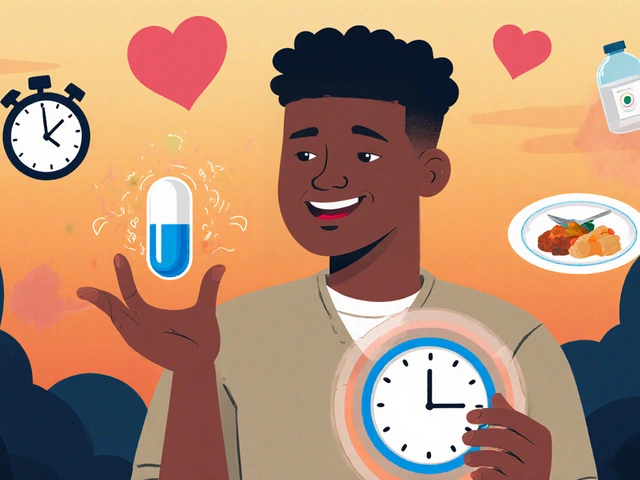


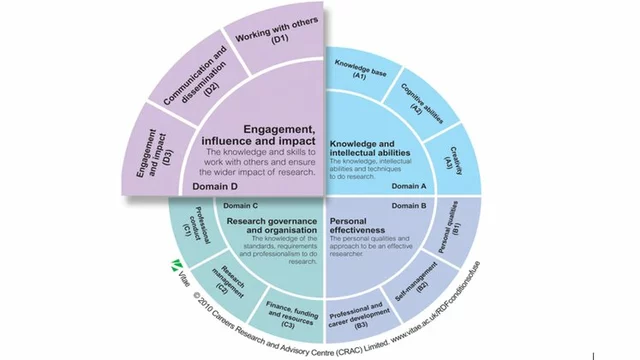

Comments(14)